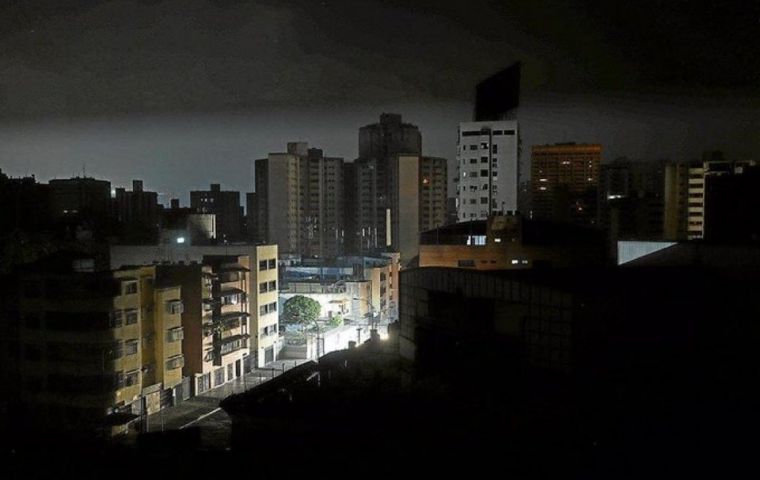MercoPress. South Atlantic News Agency
Nationwide blackout hits Ecuador after heavy rains kill 17
 The power outages were due to “a fault in the transmission line” that caused a “cascading disconnection,” Luque explained
The power outages were due to “a fault in the transmission line” that caused a “cascading disconnection,” Luque explained Entire cities across Ecuador were left with no electricity Wednesday at around 3.30 pm just two days after Energy Minister Roberto Luque ruled out that possibility when he downplayed the importance of the cessation of activity of at least three hydroelectric power plants due to heavy rains that caused at least 17 deaths according to preliminary reports. In mid-April, a series of outages led to the dismissal of Luque's predecessor Andrea Arrobo.
Luque also explained that the power outages were due to “a fault in the transmission line” that caused a “cascading disconnection.” Hence, “there is no energy service nationwide,” he added. The National Electricity Operator (Cenace) said all efforts were being made to restore service at the earliest. “We are concentrating all our efforts to solve the problem as quickly as possible,” Luque also posted on X.
The supply interruption also caused intermittencies in mobile telephony, the paralyzation of Quito's subway, and water cuts in several cities. The capital's Metropolitan Transit Agency said over 1,000 traffic lights had been affected, which prompted the assignment of 500 officers to direct traffic. “The event must be very significant to have affected even the power in the Quito Metro which uses an isolated system,” Quito Mayor Pabel Muñoz was quoted by Teleamazonas as saying.
“A blackout was reported in Quito, Guayaquil, Cuenca, Ambato, Tulcán, Latacunga, Riobamba, Santo Domingo de los Tsáchilas, Manta, Portoviejo, Durán,” the local TV station also reported.
Last Monday, the Coca-Codo-Sinclair hydroelectric plant was shut down due to the danger that it could be damaged by the increase in the amount of sediments in the flows of the rivers that feed it due to the rains that left at least 17 people dead in Andean zones, in addition to 29 injured, and 5 unaccounted for amid serious infrastructure damage, according to the National Risk Management Secretariat (SNGR). Intense rains caused avalanches and damage to roads and other infrastructure, it was explained.
Most deaths came after an avalanche near the tourist city of Baños de Agua Santa last Sunday, in the Andean province of Tungurahua. In that incident alone, 13 people were killed and 25 injured. In addition, 3 people died over the weekend in the neighboring province of Chimborazo, and one more in Cotopaxi, both in the central Andean zone. “Rocky material and mud continue to descend, so it is not possible to carry out cleanup or rescue work” in the Chimborazo area, the SNGR said.
The agency also recorded 41 homes affected, 11 destroyed, 32.79 kilometers of roads damaged, 3 bridges collapsed and 7 others damaged, plus 4 other public assets impacted, including a healthcare facility. A total of 1,395 people have been affected by 79 dangerous events since last Friday in 36 cantons (municipalities) and 60 parishes in 13 of the country's 24 provinces. The most recurring natural events were landslides, which accounted for 39.2% of the emergencies, followed by floods (21.5%).
As a precaution, the private oil pipeline Oleoducto de Crudos Pesados (OCP) suspended Monday the transport of some 200,000 barrels per day from fields in the Amazon region to a port on the Pacific.




Top Comments
Disclaimer & comment rulesCommenting for this story is now closed.
If you have a Facebook account, become a fan and comment on our Facebook Page!